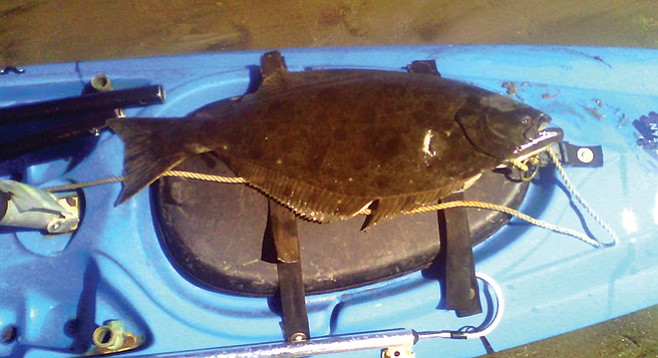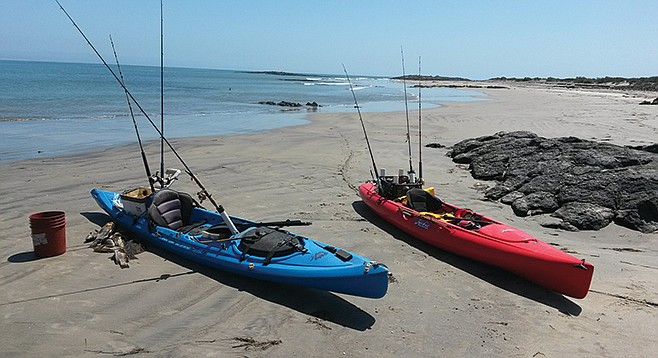 Facebook
Facebook
 X
X
 Instagram
Instagram
 TikTok
TikTok
 Youtube
Youtube

San Quintín Bay lies in the shadow of volcanoes a couple hundred miles south of the border on the Pacific coast of Baja. The bay spreads out from over seven miles of channel into false bays on either side that will be mostly high and dry on low tides. These false bays are home to several oyster operations due to the extreme currents during the tide swings; the tides keep the bay’s nutrients flowing through the mat-like cages that hold the oysters.
The Old Mill, toward the northeast end of the bay, sits across from a jetty jutting out from the opposite bank, creating a 60-yard channel between a small back bay and the main bay. The modern hotel and restaurant is where the English farmers mounted their water-driven grain mill during a failed wheat-farming startup around 1900. Many of the farmers are buried in the bayside cemetery, a few miles south of the Old Mill.

The main channel of the bay widens and deepens at the halfway point and from there on out through the mouth it runs 30 to 50 feet deep and a couple hundred yards wide. The flushing that makes good oysters creates a fishery at the bay mouth where currents collide and baitfish gather. Here, at the boca, in an area about a half mile wide and a mile or so long, one can catch halibut (my personal best was 44 pounds), white seabass (got one of those at 55 pounds), lots of sand bass, occasional yellowtail and black seabass (or mero) that go upwards of 200 pounds. By-catches can include anything from rays to 150-pound thresher sharks to rock wrasse that inhabit the edges of the eelgrass at the drop-off into the channel. I’ve had to dodge whales feeding yards from shore, and dolphin are regular visitors.
There are several sportfishing operations that run folks from the ramp at the Old Mill out to the banks 5 to 12 miles outside the bay, and most stop for a shot at a big halibut or black seabass on the way in. I have been fishing the hole at the mouth for over a year now by kayak and am usually the only one there. For years I had heard about the great halibut fishing and, for me, the bay has lived up to its reputation. There used to be a lot more game fish in the upper reaches of the bay. It’s still possible to get a decent halibut anywhere along the channel, but the odds greatly improve at the mouth of the bay.
This Saturday, June 11, MakoBob’s third annual kayak-fishing halibut tournament will be held at the hole for the first time, though it is still officially hosted at Don Eddie’s, adjacent to the Old Mill. New this year is the one-day format.


San Quintín Bay lies in the shadow of volcanoes a couple hundred miles south of the border on the Pacific coast of Baja. The bay spreads out from over seven miles of channel into false bays on either side that will be mostly high and dry on low tides. These false bays are home to several oyster operations due to the extreme currents during the tide swings; the tides keep the bay’s nutrients flowing through the mat-like cages that hold the oysters.
The Old Mill, toward the northeast end of the bay, sits across from a jetty jutting out from the opposite bank, creating a 60-yard channel between a small back bay and the main bay. The modern hotel and restaurant is where the English farmers mounted their water-driven grain mill during a failed wheat-farming startup around 1900. Many of the farmers are buried in the bayside cemetery, a few miles south of the Old Mill.

The main channel of the bay widens and deepens at the halfway point and from there on out through the mouth it runs 30 to 50 feet deep and a couple hundred yards wide. The flushing that makes good oysters creates a fishery at the bay mouth where currents collide and baitfish gather. Here, at the boca, in an area about a half mile wide and a mile or so long, one can catch halibut (my personal best was 44 pounds), white seabass (got one of those at 55 pounds), lots of sand bass, occasional yellowtail and black seabass (or mero) that go upwards of 200 pounds. By-catches can include anything from rays to 150-pound thresher sharks to rock wrasse that inhabit the edges of the eelgrass at the drop-off into the channel. I’ve had to dodge whales feeding yards from shore, and dolphin are regular visitors.
There are several sportfishing operations that run folks from the ramp at the Old Mill out to the banks 5 to 12 miles outside the bay, and most stop for a shot at a big halibut or black seabass on the way in. I have been fishing the hole at the mouth for over a year now by kayak and am usually the only one there. For years I had heard about the great halibut fishing and, for me, the bay has lived up to its reputation. There used to be a lot more game fish in the upper reaches of the bay. It’s still possible to get a decent halibut anywhere along the channel, but the odds greatly improve at the mouth of the bay.
This Saturday, June 11, MakoBob’s third annual kayak-fishing halibut tournament will be held at the hole for the first time, though it is still officially hosted at Don Eddie’s, adjacent to the Old Mill. New this year is the one-day format.
Comments